Snake Bite On Dogs – How To Keep Your Dog Alive
Snake bites on dogs and cats are a common occurrence in both city and rural areas and incredibly, although many pets die, plenty do survive if the appropriate emergency treatment is applied.
As soon as the weather warms, we start to see more snakes when we are out and about.
This coincides with pets spending more time outside in the backyard as well as us owners taking out our pets for bush walks, jaunts to the park and spending time at the beach.
The following article is written by Dr Belinda Beynon who practices in Perth (with a small amount of creative editing by Dr Leigh to make it applicable to a broader audience).
It describes her personal approach to snake bites in Perth, Australia, although the concepts can be applied all over Australia and the world!
What To Do If You Find Your Dog Collapsed And Suspect A Snake Bite
If you find your dog, collapsed on the ground near a snake, and the dog looks dead, remember that IF the dog has a heartbeat then it CAN potentially be saved. Remember these dogs are paralysed, NOT unconscious. They can hear you and know you are there. They can’t blink, they can’t move but they can hear and feel. If you act fast they might have a chance.
- Call your vet
- Get someone else to drive
- Give mouth to nose resuscitation to keep oxygen in the system.
- Hold the dog’s mouth closed with your hand,
- place your entire mouth over the nose and blow, forcefully, every five seconds.
The toxins don’t have a direct effect on the heart, but without oxygen, it will soon stop working and so will the brain.
Hi all, this is a summary of the way I, personally, approach dogs who have, or who MAY have been bitten by a snake.
I am not saying it is the only way or the right way, but it’s what I do, and it’s based on my years in Emergency at Murdoch University and tempered with working in the real world without all the machines that go ping.
The pictures on this page are of a patient I looked after recently. The picture above shows her after treatment with antivenom, and after her breathing tube was removed. You can see her tongue still isn’t working, and in her case, you can see the strike location on her muzzle. It’s very uncommon to find the strike location.
The picture below shows her while we were still assisting her breathing with a tube still in her trachea (windpipe).
In Perth and surrounds (where I live) we have a multitude of snakes, many of whom are not at all venomous to us or our pets.
Australia is home to 10 of the most venomous snakes in the world. The main three who ARE venomous are:
- Brown snakes (Dugites),
- Tiger Snakes,
- Death Adders – found in the ranges (These snakes are found in other areas of Australia also)
This chat will be about Brown Snakes and Tiger Snake, the most common venomous snakes I see.
What Happens When A Dog Is Bitten By A Snake?
The toxins in elapid snake venom (which is what Tigers and Browns are) are similar but different.
Both have neurotoxins, which cause paralysis of the muscles via loss of nerve function.
The victim dies of suffocation.
They both have procoagulants, which cause the blood to start clotting microscopically throughout the body, using up all of the clotting factors, which then causes haemorrhage anywhere at all in the body (Brown snakes are worse for this).
The patient dies from bleeding…whether a massive blood loss (in the abdomen) or a smaller loss in a very unfortunate location (brain, heart sac, lungs etc).
Tigers also have myolysins that act on muscle cells, to cause leakage of muscle proteins (myoglobin) into the blood and then urine via the kidneys.
These can cause severe kidney damage resulting in kidney failure.
Tiger snake bites can cause a direct loss of smooth muscle function in a way that Brown snakes don’t seem to.
Brown Snake Bites:
- Stop breathing,
- Cause bleeding.
Tiger Snake Bites:
- Stop breathing,
- Cause bleeding,
- Damage muscles.
First: Not All Bites Result In Envenomation
When a dog is struck by a snake it may either be a non-envenomated (a dry strike) where the snake has struck and made contact but hasn’t released venom, it may have a ‘mild’ envenomation, where the sacs were low in quantity or quality venom, or it may receive a heavy envenomation.
The key here is that NOT ALL BITES envenomate.
Many vets believe this is where the myth about Vitamin C curing snake bites has come from (that a dog receives a dry bite, the owners give vitamin C and voila, the dog is better).
It’s wrong.
It doesn’t work.
Science has proved it and people need to stop placing faith in it that it will work.
Signs That Your Dog May Have Been Bitten
IMPORTANT
If your dog vomits, passes diarrhoea, or collapses and then recovers after an interaction with a snake, then it has probably received a potentially FATAL dose of venom and needs urgent care.
If your dog is seen with a snake but does not do any of these things, it still needs to be taken to a vet for monitoring, because even a low dose envenomation can still be fatal…..just less acutely and dramatically, if left untreated.
Symptoms Of A Snake Bite On Dog
- Weakness. wobbliness (ataxia) or collapse
- Shaking or twitching
- Dilated pupils\
- Vomiting, gagging, diarrhoea
- Loss of bladder or bowel control
- Blood in urine
- Panting or very shallow, weak breathing
- Excessive drooling
- Coma or death
- Visible snake bite wound
Treatment Of A Snake Bite In Dogs
The treatment of a snake bite depends on whether the pet HAS BEEN envenomated, what snake is involved and how severely the dog has been envenomated. It will involve a combination of any of the below depending on its state.
Patient Appears Normal
The patient walks in under their own steam, and the clinical exam is normal:
Either
IV catheter placement for fluids and a blood test for clotting factors. If the Clotting Test is prolonged, the patient receives IV fluids and either a venom detection urine test (if snake not identified) followed by appropriate antivenom, or a combined tiger brown antivenom.
Multi-brown anti-venom is cheaper than Tiger Brown anti-venom, so is preferred if the snake is confirmed as a brown snake.
OR
IV catheter placement for fluids and blood test for clotting factors: If the initial clotting test is normal we wait and repeat the clotting test in 6-8 hours.
If normal then, can be discharged and it can be assumed that the dog was not envenomated. NB/ This option may include IV fluids the client budget permits.
Dr Philip Judge (Emergency medicine vet) advises that it is wise to keep snake bite cases in-hospital for 8-12 hrs and repeat neurological examinations and clotting profiles before sending them home.
He has seen delayed-onset clinical signs in a number of snakebite patients up to 6-8 hrs post envenomation; hence his recommendation for observation for this period of time and not to be in a hurry to rush home.
Patient Walks In And Is Mildly Symptomatic
Examination reveals that the dog is weak, wobbly, ataxic, decreased throat gag, decreased pupillary (eye) response, dilated pupils, ‘lower motor neuron’ signs.
In this case, there is NO NEED to do a clotting test on arrival.
This patient requires antivenom ASAP.
If the snake is identified by the VET to be a brown snake, then Multi Brown antivenom is used.
If the snake is not able to be identified then combined Tiger Brown antivenom is used.
If the snake is identified by the VET as a Tiger then combined Tiger Brown antivenom is used.
One to two vials may be used. IV fluids support is started and the patient is hospitalised until all the above clinical signs resolve.
Clotting times will be monitored, and referral for overnight care may be required. The patient is not out of danger until clotting is normal.
Patient Is Collapsed, Has Grey Gums, May Or May Not Be Breathing
This patient does NOT need a blood test.
If completely paralysed this patient needs an airway placed FIRST, and control of its airway is required.
These patients must receive breathing manually or mechanically if they are not able to breathe for themselves.
Breathing for this dog is the MOST important treatment at this stage.
Before any tests, before any conversations, before ANYTHING else.
Then an IV Catheter will be placed.
Sometimes the catheter may need to be placed first in order to allow sedation to be given for airway control.
These dogs are conscious and can be panicking if there is any residual muscular ability.
The patient is premedicated with mild sedation to reduce the risk of anaphylaxis to the antivenom, this is Vet preference.
TWO vials of antivenom will be administered over twenty minutes, and high levels of IV fluids are given to counteract any physical shock or fluid losses from possible earlier vomiting and diarrhoea.
The airway and supported ventilation will be maintained until the antivenom is effective which may take several hours.
Some patients will require mechanical ventilation.
Whilst some GP vets have access to ventilators, for many, it is a specialist procedure.
Most dogs will not require mechanical ventilation and our staff or the owners can breathe for the pet using the bag on the anaesthetic machine. (This is time and resource-dependent).
During this time a few additional tests may be performed depending on the clinical state and history of the dog.
Other Diagnostic Tests
Sometimes an ultrasound might be used to check the heart sac for bleeding, the chest for bleeding or the abdomen for bleeding.
If we can obtain urine then we look for red cells versus pigment, and to ensure that we have diluted the urine significantly to protect the kidneys.
This is particularly important with Tiger snake bites as the muscle pigment released can damage the kidneys.
How Long Does It Take For A Dog To Recover After A Snake Bite?
Once the patient can breathe on their own then they don’t need manual or mechanical support anymore.
As soon as they are able to drink and walk they are through the worst of the snakebite event.
However, until any coagulopathy has fully resolved they ARE still at risk of a bleeding event.
In the case of Tiger snake bites, some patients may suffer residual complications with their oesophagus or gullet, such as regurgitation.
Once at this point, we will often refer to an emergency and specialist care for ongoing fluids and clotting tests.
These clinics will then perform the FINAL discharge when the patient is safe.
How Much Does It Cost To Treat A Dog Bitten By A Snake?
And now…….the inevitable TALK.
Treating snake envenomated patients is expensive. Very expensive.
Our most recent case (pictured) came in paralysed, not breathing and cyanotic, but with a heartbeat.
She walked out, under her own steam, four hours later to go to a specialist veterinary hospital for ongoing assessment of her blood coagulopathy and support overnight.
Her bill, with us, was enough to buy a small, old, beaten up but driveable secondhand vehicle.
That cost is made up of antivenom, drugs, fluids, professional services and intensive care.
For most of the four hours she was with us, we did nothing but look after her.
We needed to have a dedicated team to support her the entire time she was at our clinic.
This means that more staff are required so that other patients aren’t neglected.
In a small veterinary practice this can be very tough, but perhaps less so in larger multi-vet practices.
When a dog comes in collapsed, with snake envenomation, vets will immediately ask you about whether you are able to afford treatment.
We all know that you WANT to treat, but sometimes these sorts of costs can be prohibitive.
We have to ask upfront because there is no time to waste.
If, like most of us, you live paycheck to paycheck, please prepare in advance for a crisis like this, by getting pre-authorisation for credit with a group like Vetpay or Zipmoney, and check that your vet is registered with them.
Some people choose to invest in pet insurance, while another option is to have a separate credit card that is ONLY used for this sort of crisis.
Please don’t ask for credit from your vet, we are a business, not a bank.
In our case, last year, we treated three dogs at once, two of whom had been envenomated (and saved them) for a desperate client who promised us the money.
We saw half of it and are still chasing the balance.
Like many vets, we are a small family-owned clinic.
We can’t do it, and it’s not fair to ask small businesses to fund these emergencies for you due to a lack of preparation on your behalf.
We are vets, we love animals and we care for you, but we cannot be your bank.
Where Do Snakes Live?
It is an urban myth that snake bites are something that only occurs in semi-rural areas.
Snakes are amazing at adapting to urban areas and can be found in most suburbs.
According to the SnakeMap Project by the University of Melbourne, the vast majority of snake bites occur in people’s own backyards.
Snakes are incredibly peaceful animals unless provoked.
However, their definition of provocation is often very different from ours.
Despite most opinions, snakes are not naturally aggressive but can become so if they believe they are under attack or cannot escape.
Anecdotally, Tigers can be more aggressive than Browns, but this is a very subjective opinion.
Snakes are protected by law in WA and it is illegal to kill them.
Our pets don’t know this law, and they often have a jolly good attempt at either playing with, or killing a snake, and this is when they get bitten by a snake.
How To Identify A Snake

IF the dog has killed the snake and it has been left at home, the owner can go home, and carefully retrieve the snake for the vet to identify the snake.
Colour and patterns on Tigers and Browns can be very similar at different ages, stages and locations.
Owners are not always right in their ID.
Vets will examine the ventral scales behind the vent:
- divided ventral scales it’s a Brown snake,
- single ventral scales, it’s a Tiger.
Don’t try this at home, kids.
Cleverer vets than I can also ID using the snake’s facial scales.
If the snake is not available, and it is felt that further antivenom is needed, then a venom detection test can be performed.
This is a commercially available kit that uses urine.
It’s a test that can take up to twenty minutes to run, so you don’t use it if an animal is clinically affected without starting a multivalent antivenom first.
Has your dog or any other pet received a snake bite and lived to tell the tale? We’d love to hear your story in the comments below.
- 12
- 13

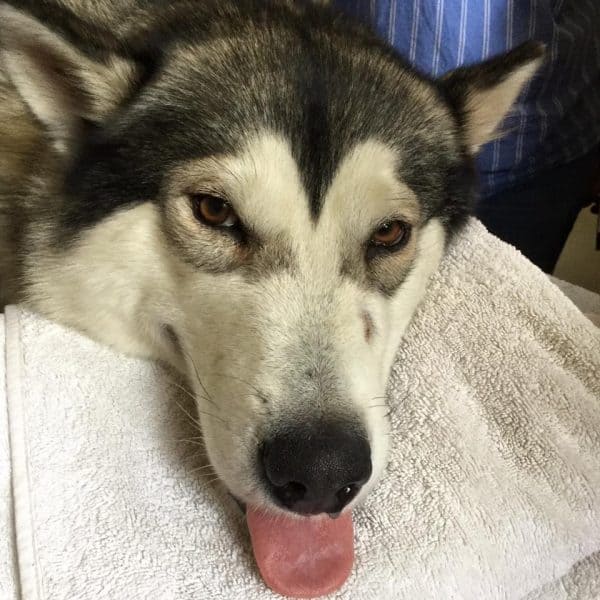
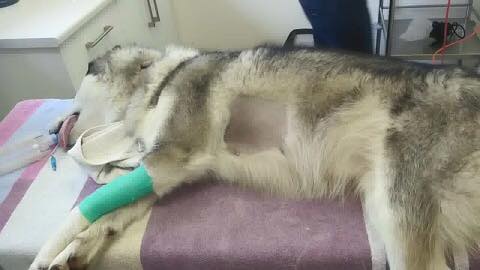

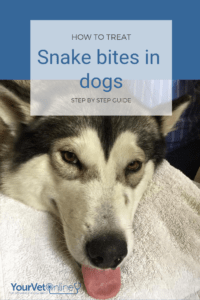

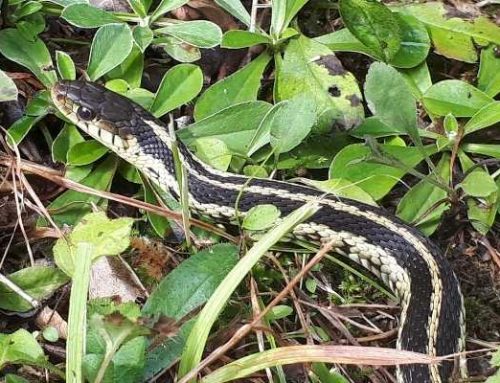
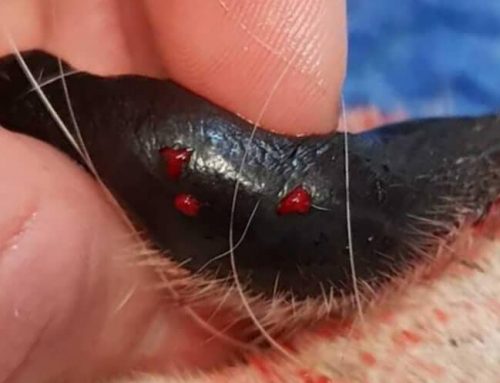
Leave A Comment